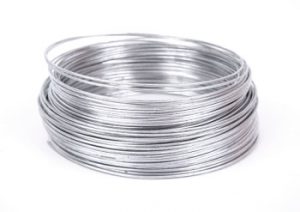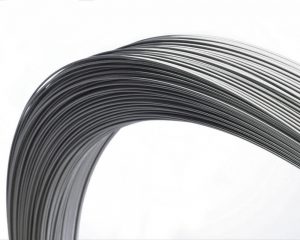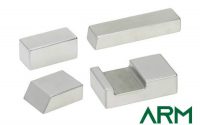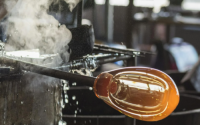Comparison Between Mo & Mo-La Alloy Wire in Wire Cutting
Nowadays, molybdenum metal occupies an increasingly important position in the deep processing industry. For example, molybdenum wire has been widely used in modern mold processing. At present, the molybdenum wires used in wire electric discharge cutting on the market mainly include pure molybdenum wires and molybdenum-lanthanum alloy wires. If you want to know how molybdenum wire is used in wire electric discharge cutting, you can read our previous article. This article will focus on comparing the two aforementioned molybdenum wires for wire-cutting electrodes.
First of all, it is necessary to understand the requirements of wire cutting for molybdenum wire. Molybdenum wire has superior quality properties, including ductility, electrical conductivity, electron work function, tensile strength, impact resistance and corrosion resistance. The requirements of wire cutting on molybdenum wire are mainly reflected in the broken wire-rate, discharge efficiency and material loss. By improving discharge efficiency and reducing material loss, the purpose of reducing the broken wire rate of molybdenum wire and improving the comprehensive use value can be achieved.

The following are the test results obtained by comparing the performance of pure molybdenum wire and molybdenum-lanthanum alloy wire under the same wire electric discharge machining conditions.
1) High-temperature performance: due to arc discharge, pure molybdenum wire is prone to brittle fracture when the working temperature exceeds 1200 °C, while molybdenum-lanthanum alloy wire is prone to brittle fracture when the working temperature exceeds 1400 °C.
2) Strength: Continuously moving molybdenum wire is easily broken due to insufficient strength. When φ=0.18 mm, the tensile strength of pure molybdenum wire is 1800-2200 N/mm2, while that of molybdenum-lanthanum alloy wire is 1900-2300 N/mm2.
3) Discharge performance: When φ=0.18 mm, the metal cutting capacity of pure molybdenum wire is about 4000 mm2/h, while that of molybdenum-lanthanum alloy wire is about 4500 mm2/h.
4) Anti-damage performance: When φ=0.18 mm, the diameter loss of pure molybdenum wire is about 0.0006875 mm/h, while the diameter loss of molybdenum-lanthanum alloy wire is about 0.0006565 mm/h.
5) Comprehensive performance: when φ=0.18 mm, the average metal cutting volume of pure molybdenum wire can reach up to 200,000 mm2, and the average metal cutting volume of molybdenum-lanthanum alloy wire can reach 300,000 mm2.
| Properties (φ=0.18mm) | Mo Wire | Mo-La Wire |
| Max Working temperature | 1200 °C | 1400 °C |
| Tensile Strength | 1800-2200 N/mm2 | 1900-2300 N/mm2 |
| Metal Cutting Capacity | 4000 mm2/h | 4500 mm2/h |
| Diameter Loss | 0.0006875 mm/h | 0.0006565 mm/h |
| Average Metal Cutting Volume | 200,000 mm2 | 300,000 mm2 |

From the above comparison, the overall performance of molybdenum-lanthanum alloy wire is better than that of pure molybdenum wire. It seems that by adding rare earth elements, the broken wire rate during the use of wire-cut molybdenum wire can be effectively reduced, the discharge efficiency can be improved, and the overall performance can be improved. Therefore, the electrode wire for wire cutting that is currently used in the mainstream market should be molybdenum-lanthanum alloy wire. Nevertheless, molybdenum-lanthanum alloy wire still has problems such as high wire breakage rate, low cutting efficiency, and short service life. Research on molybdenum wire continues.
Stanford Advanced Materials (SAM) is a trusted supplier of high-performance molybdenum & molybdenum-lanthanum alloy wire and a wide variety of molybdenum products. For more information, please send us an inquiry.



